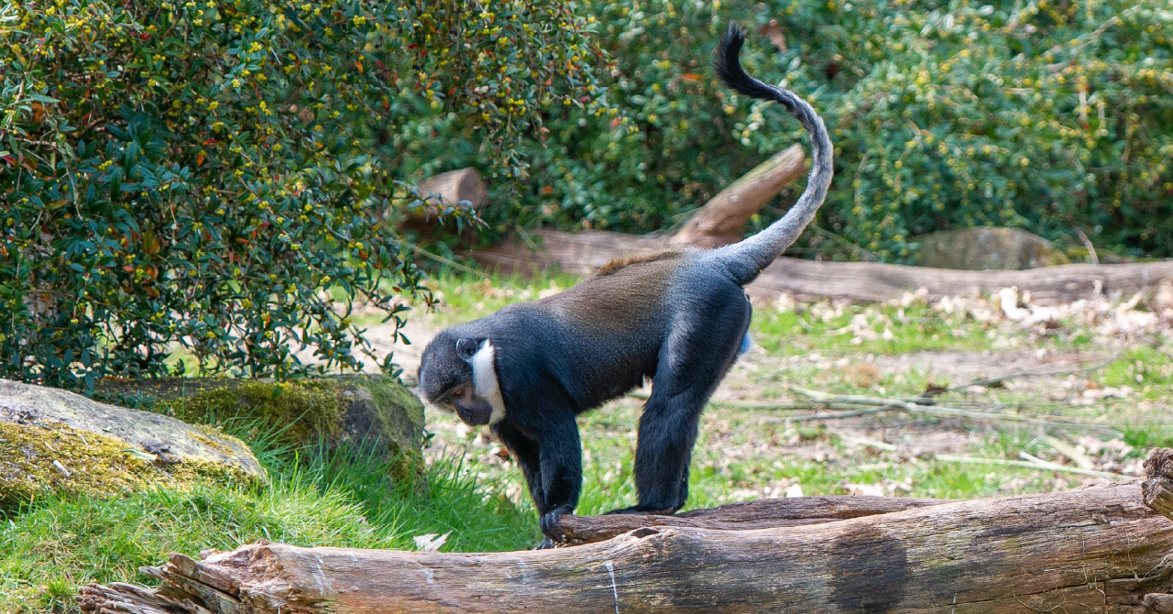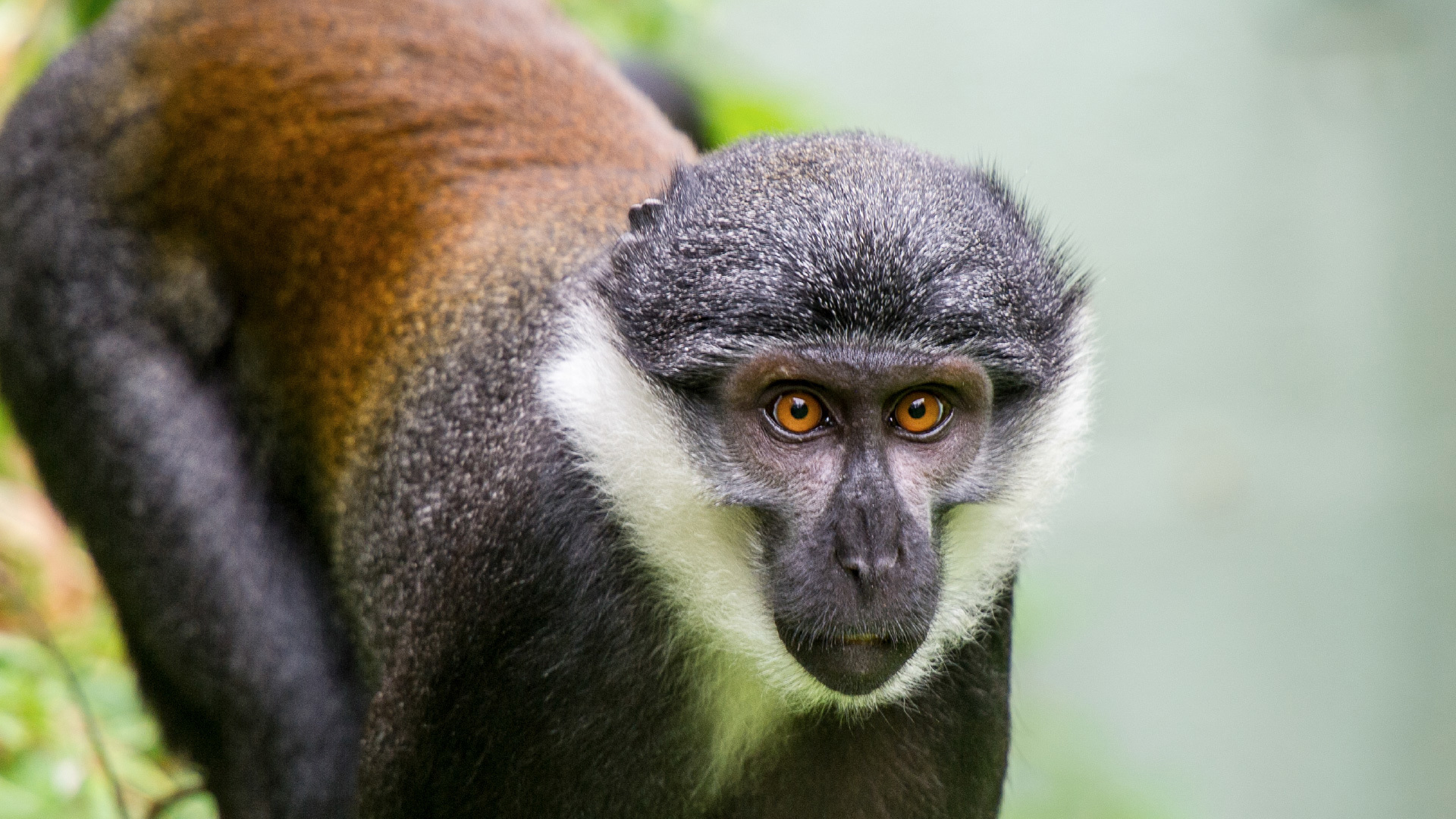L'Hoest’s Monkey
Allochrocebus lhoesti
Habitat
Savanna, Lowland forests
Food
Fruit, leaves, insects
Weight
♂ 6 – 10 kg | ♀ 3 – 4,5 kg
Age
15 to 25 years
IUCN Status
Kwetsbaar
Appearance
L‘Hoest’s monkeys are a spectacular phenomenon. They have black fur and a reddish-brown, saddle-shaped pattern on their back, surrounded by a grey border. Their face is dark and is surrounded by their white cheeks and throat. Characteristic for these guenons is their long, white tail which ends in a black tip. Males and females look very similar, but there is one striking difference between them: males have bright blue testicles. The brighter the colour, the more dominant the male. In addition, the females are smaller than the males.
Habitat
L‘Hoest’s monkeys live in Africa. They are native to the DRC (Democratic Republic of Congo), Rwanda, Burundi and Uganda. They are real ‘forest monkeys’ who spend a lot of time on the ground. L‘Hoest’s monkeys live in multiple types of forests, ranging from tropical lowland forests to semi-mountainous woods and near water. They are sometimes known as ‘mountain monkeys ’ because they have been spotted at altitudes as high as 2900 metres.
Lifestyle
L‘Hoest’s monkeys live in groups. Each group consists of about ten to seventeen females and their offspring and a single male. Other males live in all-male groups. Because only one male gets to mate with the females, there is a lot of competition among the males. The ‘fortunate’ male has to constantly defend his position in the group from other males and as a result, males rarely stay in that position longer than one or two years. L‘Hoest’s monkeys are mainly active during the day. They can usually be found on the ground, busily foraging for food. The way they sleep is striking: they sleeping sitting, holding onto each other or onto branches.

Reproduction
L‘Hoest’s monkeys are mostly born between April and November. Females usually give birth at night. The infants are born with chestnut-coloured fur. Later, their fur turns black. The young receive a lot of attention from the other females in the group. They all enjoy taking turns holding the mini-monkeys for a while! The young remain dependent on their mothers for the first two years. After that, the next infant can be born. When young males become sexually mature, they leave the group. Females remain in their natal group.
Situation in the wild
L’Hoest’s monkeys are vulnerable in the wild. They are under threat because their habitat is being replaced by agricultural land. People also hunt these monkeys for their meat. Fortunately, L‘Hoest’s monkeys are protected in a number of African national parks.

At Apenheul
The L‘Hoest’s monkeys at Apenheul live together with the gorillas on the island. These two species get along very well indeed! Juvenile gorillas in particular enjoy playing with the guenons.
Population management programme
Apenheul is part of the European endangered species programme (EEP) for L‘Hoest’s monkeys. By working together with other zoos we ensure a genetically healthy and demographically stable population of this species is maintained in zoos.
Fun facts
- L’Hoest’s monkeys use five different alarm calls. They use them when they find themselves in dangerous situations. They make different sounds for different types of danger.
- There are about 25 different types of guenons. Each species has a different type of fur. This is especially striking in the guenons’ faces.
Want to see the L'Hoest’s Monkeys at Apenheul?
Get your tickets now and spot all the primate species!

Welcome to Apenheul
Open every day
Park open from Saturday 26 April, 10.00 hour